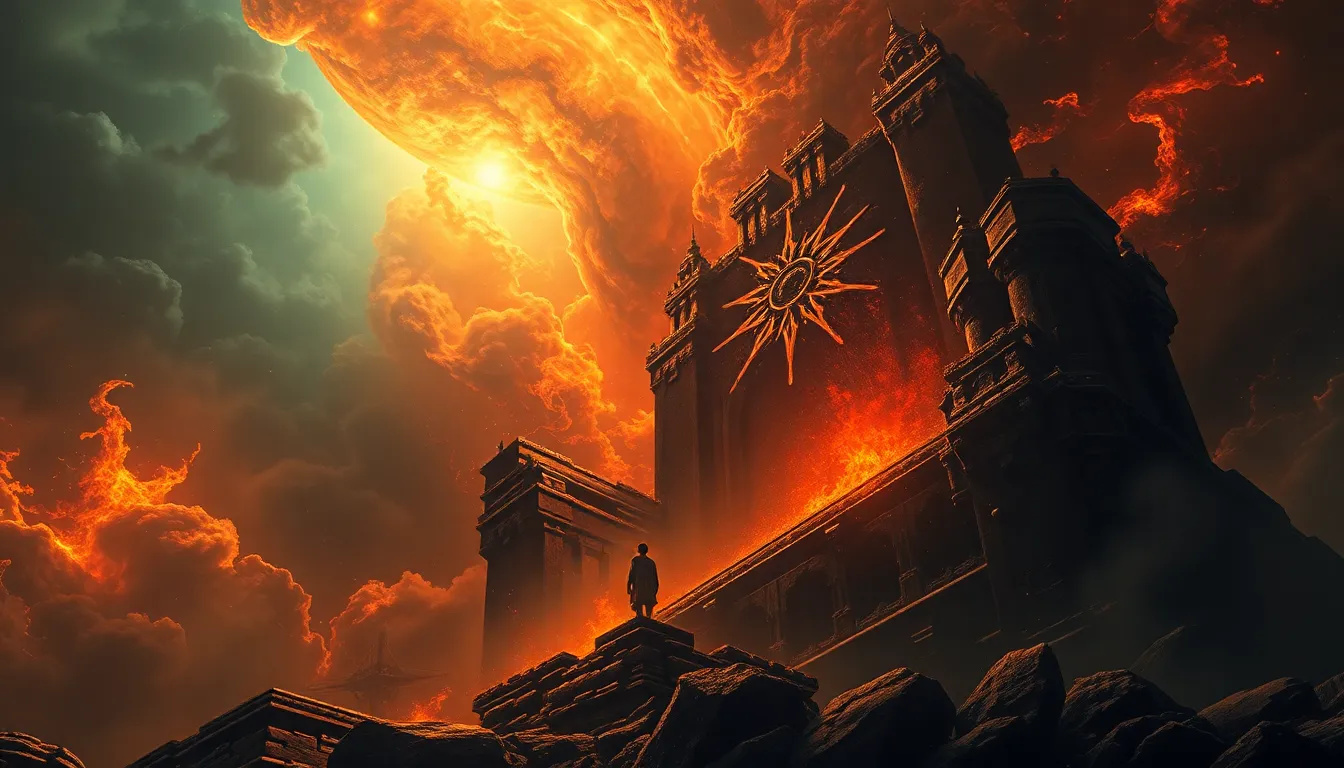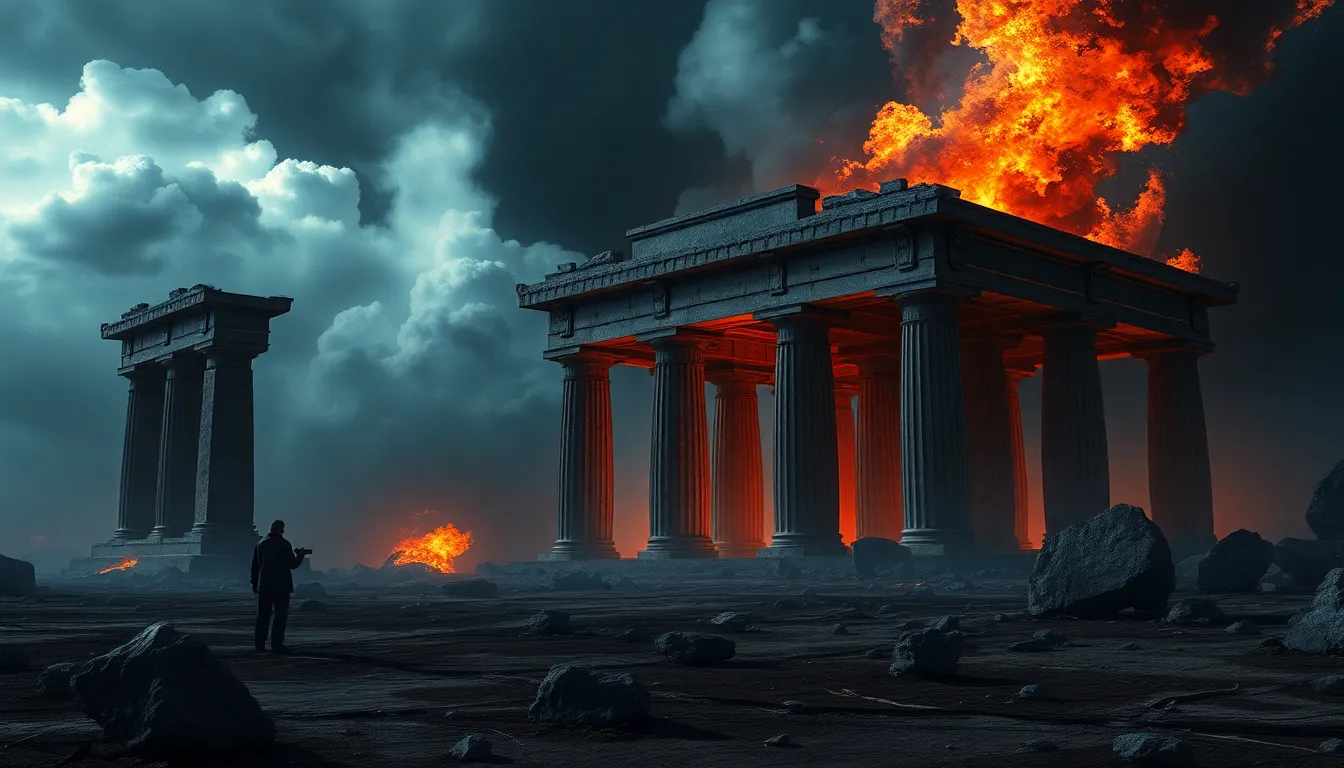From Prophets to Predictions: The Myths of the Apocalypse
I. Introduction
The term “apocalypse” traditionally refers to a catastrophic event that leads to the end of the world as we know it. Throughout history, the concept of the apocalypse has held significant meaning in various cultures, often serving as a metaphor for transformation, renewal, or divine judgment. This article aims to explore the myths surrounding apocalyptic predictions and their profound impact on society, revealing how they shape our beliefs, actions, and collective psyche.
II. Historical Context of Apocalyptic Beliefs
Apocalyptic beliefs are not a modern phenomenon; they have deep roots in history. Various ancient civilizations crafted narratives that depicted cataclysmic events, often tied to their understanding of cosmic order and divine will.
A. Ancient civilizations and their apocalyptic narratives
From the ancient Mesopotamians to the Mayans, cultures have produced stories that forecast the end of days. For instance, the Epic of Gilgamesh recounts a flood that destroys humanity, a theme echoed in many cultures.
B. The role of religious texts in shaping end-of-the-world scenarios
Religious texts, such as the Bible’s Book of Revelation and the Islamic Hadith, have profoundly influenced apocalyptic thought. These texts often contain vivid imagery of destruction and renewal, fostering a belief in eventual divine retribution.
C. Evolution of apocalyptic thought through the ages
Over time, apocalyptic thought has evolved, influenced by cultural, social, and scientific advancements. The Renaissance and the Enlightenment sparked new interpretations, often combining emerging scientific understanding with traditional beliefs.
III. Prominent Prophets and Their Predictions
Throughout history, various figures have emerged as prophets, proclaiming impending doom or divine revelation.
A. Overview of key historical figures (e.g., Nostradamus, John of Patmos)
- Nostradamus: A 16th-century astrologer whose cryptic quatrains have led many to believe he predicted various global events.
- John of Patmos: The author of Revelation, whose vivid visions of the end times have inspired countless interpretations.
B. Examination of major predictions and their societal reception
Predictions by these figures often sparked social movements, fear, and anticipation. For example, Nostradamus’s supposed predictions about the rise of Hitler and the September 11 attacks generated significant media attention and public discourse.
C. The impact of prophetic claims on followers and communities
Prophetic claims have the power to mobilize communities, create cult followings, and even inspire violent actions. The anticipation of an apocalypse can unite individuals under a common cause, sometimes leading to tragic outcomes.
IV. Cultural Myths and Folklore Surrounding the Apocalypse
Apocalyptic myths permeate cultures worldwide, each reflecting unique societal fears and hopes.
A. Common themes in apocalyptic myths across cultures
- Natural disasters as harbingers of doom.
- Divine judgment leading to the separation of the righteous and the wicked.
- Renewal and rebirth following destruction.
B. The symbolism of the apocalypse in literature and art
The apocalypse has been a source of inspiration for countless works of literature and art, symbolizing humanity’s struggle against chaos, morality, and existential dread. Notable works include:
- Dante’s “Divine Comedy”
- Mary Shelley’s “Frankenstein”
- Cormac McCarthy’s “The Road”
C. How folklore shapes modern perceptions of the end times
Folklore continues to shape how contemporary society perceives the apocalypse, often blending traditional narratives with modern anxieties about climate change, technological advancement, and social upheaval.
V. The Psychological Appeal of Apocalypse Predictions
Understanding the psychological allure of apocalyptic predictions reveals much about human nature and societal dynamics.
A. Understanding why people are drawn to apocalyptic scenarios
Many individuals find comfort in apocalyptic narratives, perceiving them as a way to make sense of chaos and uncertainty. These stories often provide clear moral dichotomies, which can be psychologically appealing.
B. The role of fear and uncertainty in human psychology
Fear of the unknown drives many to seek explanations for potential disasters. Apocalyptic predictions can serve as a coping mechanism, offering a framework through which individuals process their anxieties.
C. The comfort found in prophetic narratives during crises
During times of crisis, such as pandemics or natural disasters, prophetic narratives can provide solace. Many people turn to these stories to find meaning amidst suffering.
VI. The Influence of Technology on Modern Apocalyptic Predictions
The digital age has transformed how apocalyptic predictions are disseminated and received.
A. The rise of social media and its role in spreading apocalyptic fears
Social media platforms amplify apocalyptic narratives, allowing them to spread rapidly. Viral posts can create panic and mobilize communities around shared fears.
B. The impact of scientific advancements (e.g., climate change, AI) on end-of-the-world narratives
Modern scientific concerns, such as climate change and artificial intelligence, have given rise to new apocalyptic narratives. These issues challenge previous beliefs and create urgency for change.
C. Case studies of recent predictions and their societal impact
Recent predictions, such as the 2012 Mayan apocalypse and various Y2K fears, illustrate how modern society reacts to apocalyptic scenarios. Many cases show that while predictions may fail, the societal impacts can be profound.
VII. The Role of Doomsday Cults and Movements
Doomsday cults have emerged throughout history, often capitalizing on apocalyptic fears.
A. Overview of significant doomsday groups throughout history
- The Millerites, who anticipated the Second Coming in 1844.
- The Heaven’s Gate cult, which believed in extraterrestrial salvation in the 1990s.
B. Analysis of their beliefs, practices, and outcomes
Doomsday groups often promote intense beliefs that can lead to radical actions. Their outcomes vary, with some leading to tragic ends, such as mass suicides, while others dissolve without incident.
C. The intersection of social movements and apocalyptic predictions
Many doomsday cults intertwine with social movements, attracting followers by addressing broader societal anxieties and discontent.
VIII. Debunking Common Apocalypse Myths
While apocalyptic predictions often capture public attention, many fail to hold up under scrutiny.
A. Examination of frequently cited apocalyptic predictions and their inaccuracies
Many well-known predictions, such as those surrounding the year 2000 or the Mayan calendar, have proven inaccurate, often leading to disillusionment among followers.
B. The role of critical thinking in evaluating prophetic claims
Encouraging critical thinking is essential in evaluating apocalyptic claims. Rigorous analysis can help individuals discern fact from fiction.
C. Historical lessons from failed predictions
Failed predictions provide valuable lessons about the dangers of credulity and the importance of skepticism in an age inundated with information.
IX. The Future of Apocalyptic Beliefs in a Changing World
As the world continues to evolve, so too will apocalyptic beliefs.
A. How globalization and modernity shape new apocalyptic narratives
Globalization fosters a shared consciousness that influences apocalyptic narratives, merging diverse beliefs into new forms.
B. Potential new figures or movements that may emerge
With the rise of new technologies and global crises, new prophetic figures may emerge, shaping future narratives around the apocalypse.
C. The ongoing relevance of apocalyptic thinking in contemporary society
Apocalyptic thinking remains relevant as society grapples with existential threats, serving as a lens through which to understand the complexities of modern life.
X. Conclusion
The fascination with the apocalypse is a testament to humanity’s enduring quest for meaning and understanding in an unpredictable world. As we navigate the challenges of modernity, the myths surrounding apocalyptic predictions will continue to



